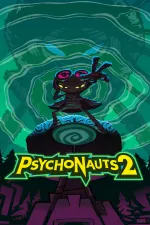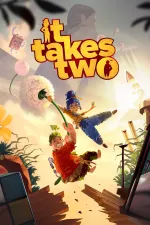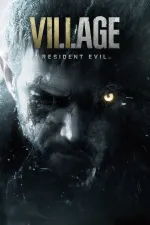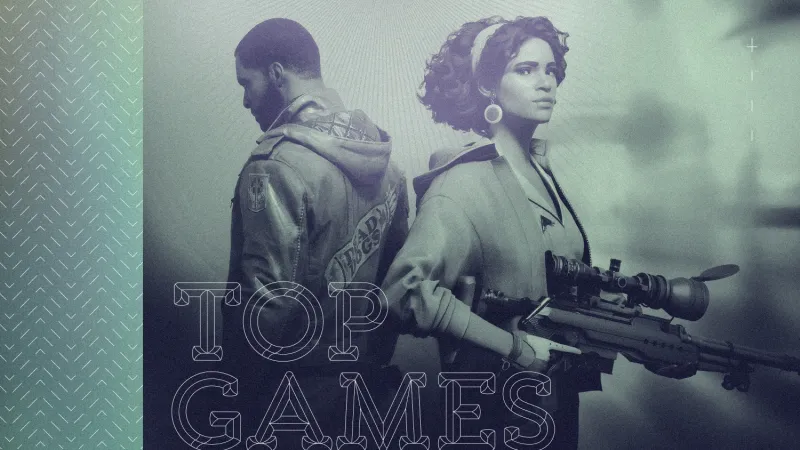
The first full year of a new platform cycle is always exciting. Developers have new technologies to leverage in game releases, and players begin to glimpse the potential of new hardware. This particular new generation of gaming has had an unusual start. The global pandemic meant significant changes to development pipelines, causing production setbacks and global shipping delays. This resulted in games arriving later and new hardware that was difficult to find – even for the most diligent gaming enthusiasts.
Despite those challenges, 2021 came together as an excellent year for video games, filled with remarkable new experiences for players to enjoy. We’ve selected and ranked our picks for the 10 best releases of the year, detailing exactly why these particular games are must-plays. Read more…
10
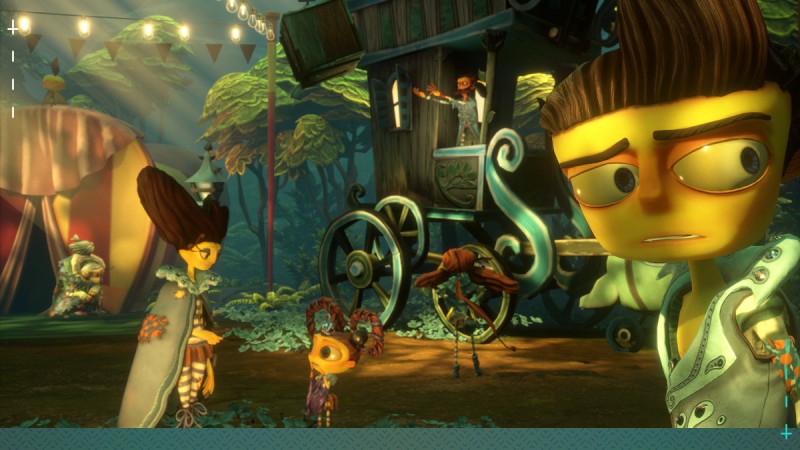
Psychonauts 2
The original Psychonauts set the template for what would become the quintessential Double Fine game. That is to say, an experience that overflows with personality, humor, and imagination and gameplay that, while usually serviceable, doesn’t reach the same heights. This trend finally ended with Psychonauts 2. Fans waited years for this sequel, and, against all odds, it not only lives up to expectations but shatters the perception of what Double Fine is capable of.
Psychonauts 2’s gameplay serves as a marked improvement over the original. Exceptional level design across an array of wildly imaginative worlds showcases the more finely tuned platforming. Exploring bizarre mental destinations such as a casino/hospital mash-up or a puppet-driven twist on Iron Chef was always an exciting prospect. We’re glad that actually playing them proves just as entertaining; there’s no Meat Circus to be found. Raz’s psychic abilities, such as telekinesis and pyrokinesis, are as fun as ever. New powers like conjuring a goofy, wafer-thin doppelganger are welcome additions.
The espionage story stands as the highlight, thanks to its surprising twists and turns. Hanging out with Raz and his gang of old favorites and fun newcomers, including his entire family, left permanent smiles on our faces. Most admirably, the writing handles mental illnesses with respect and empathy instead of ridicule. Psychonauts 2 is a superb throwback to the platformers of yesteryear and it’s Double Fine’s magnum opus. | Our Review
9
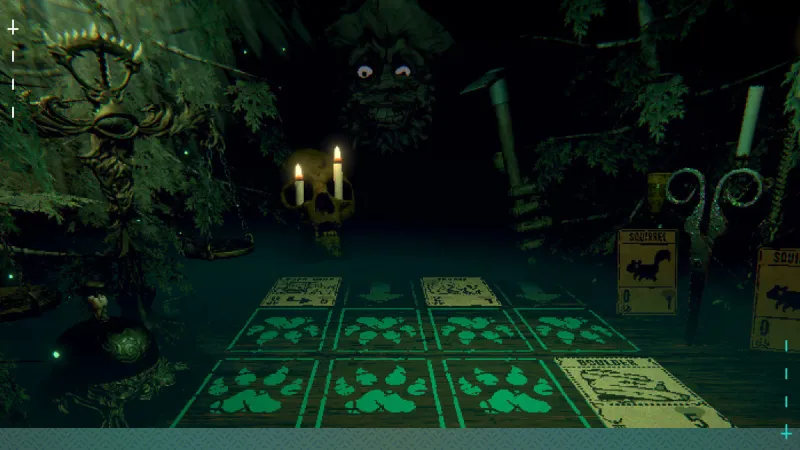
Inscryption
Excitement for Inscryption swept through our staff like wildfire at the year’s end. The title is thick with atmosphere and mystery from the opening moments, taunting you to ask questions from the start screen. However, its impressive introduction is just a façade. Tearing it away shows the true layers at the heart of the narrative, slowly revealing what the game actually is and how you, the player, are instrumental to its story.
The core of Inscryption is a robust card game similar to Yu-Gi-Oh and Hearthstone that grows and changes over time. New mechanics and resource systems continuously appear throughout, providing plenty of viable builds to explore. You learn the ropes of the game in a dark cabin, with only the table to which you’ve been shackled visible in the flickering candlelight. Peering from the pitch-black shadows are the orange, spiral eyes of your captor, who acts like a D&D game master, roleplaying your opponents in his sinister deckbuilding roguelike gauntlet. From there, Inscryption masterfully weaves puzzles in and out of its card game and exploration sequences. Every discovery is a chance to learn more about your desperate circumstance and advance further towards freedom.
Daniel Mullins Games’ Inscryption is unsettling at times and downright wonderous at others; many of its best moments are ones we won’t spoil here. It goes to incredible, unexpected places and is worth seeing through to the end. It’s one of the most fascinating experiences of the year and truly hits best when you know as little as possible going in. | Our Review
8
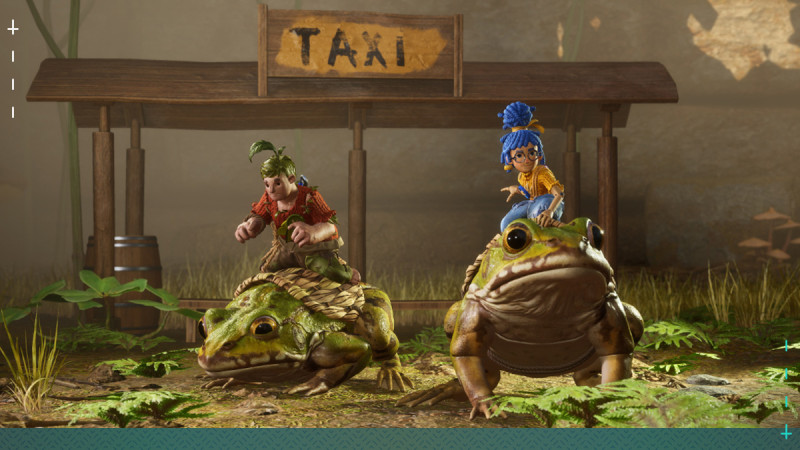
It Takes Two
Teamwork is everything in It Takes Two, a cooperative-only experience that dazzles with its gameplay variety and ability to unite player individuality in dynamic ways. The two playable characters, Cody and May, were once in love but are now divorcing – a decision that has broken the heart of their beloved child, Rose. Her tears cast a magical spell on her parents, turning them into small toys made of wood and clay. Their diminutive size turns their home into a sprawling world of wonder, ripe for perilous platforming and an adventure that pounds with excitement.
Cody and May see the world differently, and their actions match their thinking. In one stage, Cody can place explosive gel, which only May’s rifle can detonate. All of the action in the game unites the players and demands communication between them. This formula creates a riveting gameplay package that is constantly changing, giving players new challenges to overcome with each new area they reach. The gameplay also speaks to Cody and May developing as characters as they learn to put aside their differences and find a mutual understanding for their daughter.
It Takes Two has a wonderful heart, and the variety it offers keeps the experience fresh from start to finish. It’s one of the most rewarding cooperative experiences to date and can be an absolute delight for friends, families, and lovers. | Our Review
7
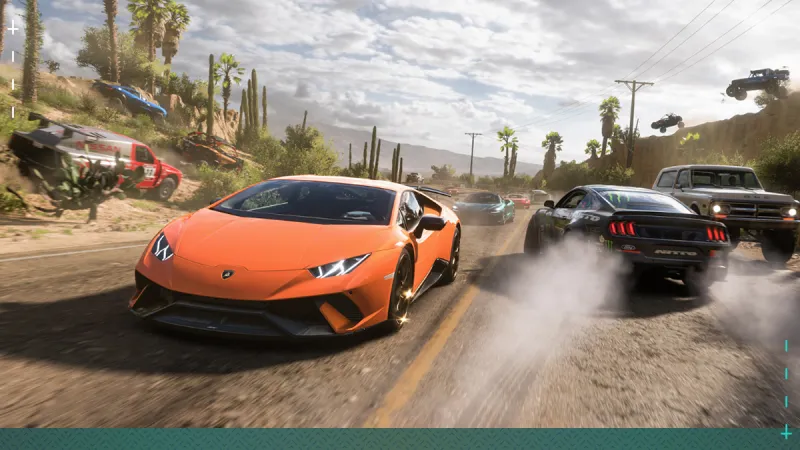
Forza Horizon 5
To merely say Forza Horizon 5 is among the most mechanically sound racing games ever created would be a disservice and overlook what makes the game worthy of praise. Yes, the foundational act of driving feels fantastic, but it’s the rest of the package that truly elevates this fifth entry in the series to the rarified air that demands a place on our list of the top 10 games of the year.
From the moment you turn the game on, you’re confronted with the undeniably gorgeous recreation of Mexico, where the technical powerhouse that is Forza Horizon 5 takes place. Not only that, but you’re immediately thrust into the action, and – save for a few small cutscenes after the impressive opening sequence – Forza Horizon 5 is a game about getting out of your way and letting you have fun.
As you comb through the detailed and diverse biomes, you encounter all manner of speedy pursuits. From traditional races and story-driven mission chains to vehicles hidden away in barns and communal multiplayer events, Forza Horizon 5 never short-changes the player when it comes to exciting, action-packed activities. Add on top of this some of the most impressive visuals in gaming today, plus an incredible sense of speed, and you have a game that both diehard and casual racing game fans can easily enjoy. It’s a strong sell, even for those who are otherwise uninterested in the genre. Forza Horizon 5 isn’t just the undisputed best racing game of 2021 but also one of the best overall games to release this year. | Our Review
6
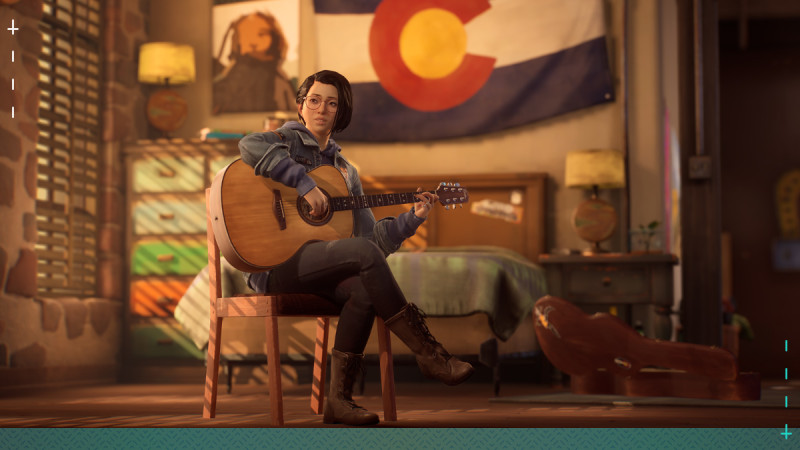
Life is Strange: True Colors
Emotional hardships make the Life is Strange series shine, but the newest entry doubles down to create a fascinating tale about resilience. Life is Strange: True Colors is not only Game Informer’s best adventure game of 2021, but also features our best video game hero in the sarcastic and pained Alex Chen.
Deck Nine, which previously worked on the Life is Strange prequel, Before the Storm, took the reins from original developer Dontnod for this mainline entry. With that change comes some upgraded visuals, such as a more detailed and explorable landscape, alongside better-animated character models. The improved graphics catch your eye, but it’s Alex Chen and her tragic story that captures your heart.
True Colors is about a lot of things: seeking justice, creating your own family, and coming to terms with your past, to name a few. But it’s how Deck Nine showcases these complex topics through a small town and its protective residents that’s especially memorable. Whether you take to Jed’s father-figure tendencies or romance DJ and dungeon master Steph, growing Alex’s bonds helps establish roots in this place and decide where her future lies.
As you forge connections, Alex’s super- natural, mind-reading power gets more interesting. She can choose to take away what’s hurting those around her. This is where Deck Nine takes the concept of empathy and turns it into a dilemma. Is removing someone’s pain better for them, or do they need that process to grow? And what’s the cost to ourselves when we take on other people’s emotions? It’s a journey we won’t soon forget, especially the fun LARP romp through town. | Our Review
5
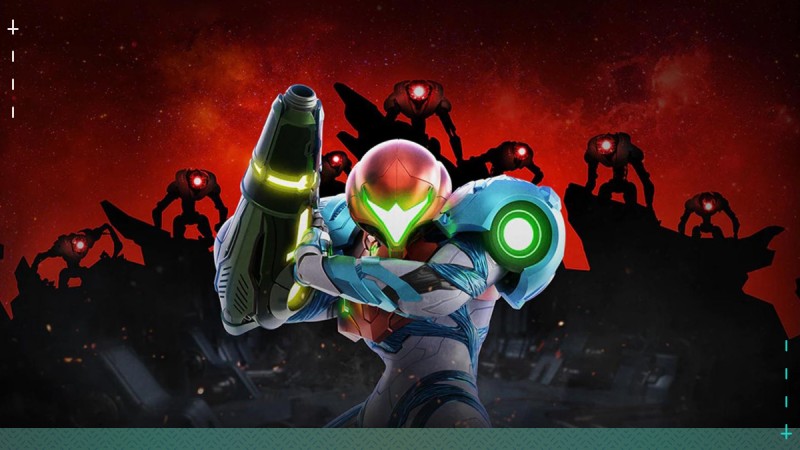
Metroid Dread
In the time between the release of Metroid Fusion for the Game Boy Advance and the launch of this year’s Metroid Dread, a lot has happened. New Nintendo fans have been born, grown-up, and even started college. But one thing hasn’t changed in 19 years: our love for Metroid’s iconic exploration-based platforming. The moody, sci-fi adventures are so iconic they define an entire genre. Case in point, you can’t browse an online store these days without bumping into a new twist on the “Metroidvania” formula. But with Metroid Dread, Nintendo proves there’s nothing wrong with the original design.
Dread’s setup is simple: A dangerous parasite that mimics other creatures is slowly infecting the remote, alien planet ZDR, so the Galactic Federation dispatches a company of state-of-the-art robots to investigate and contain the outbreak. When contact with the machines goes dark, the Federation turns to something better than a gang of high-tech murderbots: the bounty hunter Samus Aran.
Like Samus’ previous adventures, Dread lets players slowly explore a sprawling, interconnected map. Around every turn is a new power-up or weapon allowing Samus to unlock new areas or defeat ZDR’s gruesome foes. We loved climbing up walls with the Spider Magnet or unleashing a hailstorm of missiles on unsuspecting enemies – all while playing cat-and-mouse with the nearly-indestructible EMMI robots.
Metroid Dread provides a decent challenge, and its short runtime means that you can polish it off in about a weekend, but that just left us wanting more. We hope we don’t have to wait another 19 years for the next 2D Metroid game, but even if it takes two decades for Nintendo to create another masterpiece like Dread, it will be worth the wait. | Our Review
4
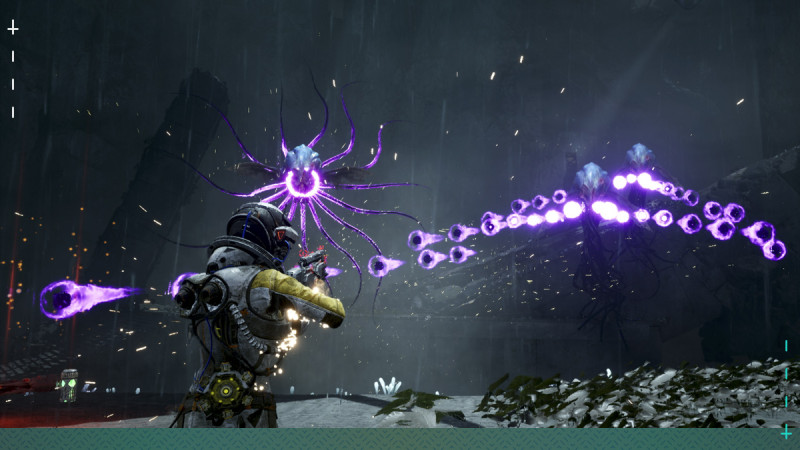
Returnal
Acohesive undercurrent runs throughout the entirety of Returnal to create a masterpiece; art, gameplay, music, sound, and design come together in a symphony that all seems to have been crafted by the same hand. With Returnal, Housemarque has taken its expertise in the arcade bullet-hell genre and magically melded the formula with the third-person roguelike shooter. These are all words that describe the nature of the game by category, but the best way to discuss Returnal is to call it an experience. What begins as a struggle through a harsh alien world becomes an adventure fueled in equal parts by curiosity and trepidation. As you continue, you overcome challenges, building up a massive arsenal of interesting armaments over time.
Returnal takes oft-niche and hard-to-get-into genres like the bullet-hell, and turns them into an auditory and visual feast for the senses that anyone can dive into and explore. It’s a triumph atmospherically and every element of the gameplay channels that tension and off-feeling of a strange alien world. Some areas like the fourth biome are masterpieces of environmental storytelling in this regard, where mysteries planted at the start of the level are terrifyingly solved with great satisfaction. Of the frontrunners, Returnal is really the only title that does anything outside of tried-and-true prescribed genre blends, and while there are other great games on the list, we think it’s astonishing that its amalgamation of disparate aspects forms an absolute superb and riveting ride. | Our Review
3
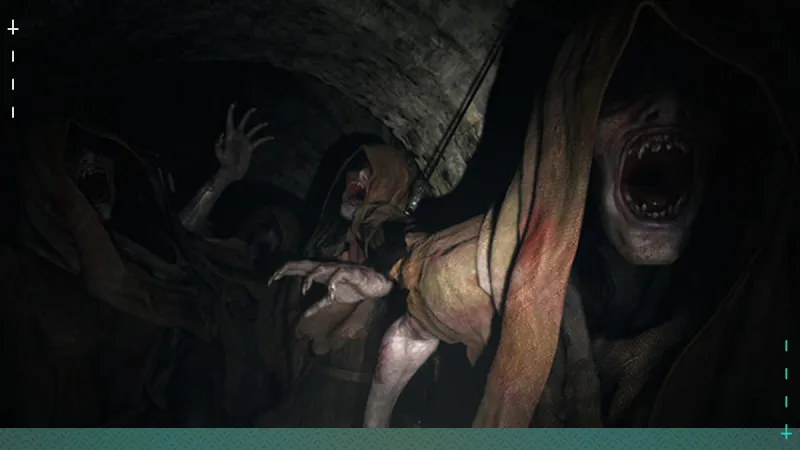
Resident Evil Village
Resident Evil Village is relentless. From its opening moments to its eventual conclusion, it’s a non-stop, terrifying ride. Village is not only one of the best games of the year; it’s one of the best horror games of all time.
Taking cues from 2005’s Resident Evil 4, Village plays out like the greatest hits of horror tropes. There’s the impossibly large gothic mansion full of deadly vampires. There’s the psychologically damaging doll- house. A semi-abandoned village, populated less by humans and more by werewolves. Body horror runs rampant – from grotesque human-fish monsters, to giants, to underdeveloped fetuses, and even cyberpunk monstrosities akin to Tetsuo: The Iron Man. The gang’s all here and then some.
In the wrong hands, Village would be exhausting. It’s hard to shoehorn in that much and not have it grate on the player or lose its impact. But one of the best things about Village is its pacing. Levels, scares, and monsters rarely overstay their welcome; everything feels timed out to the second to be as impactful as possible, and then it gets out of your way, on to the next nightmare.
And nightmare really is the best word for Village. It might not be the scariest game of all time, but it’s at least one of the most consistent and interesting. Playing Village never felt boring; it always had some trick up its sleeve, some new, unexpected terror. Always changing, always different. Resident Evil Village strikes a remarkable balance with its scares and is one of the best horror games we’ve ever played. | Our Review
2
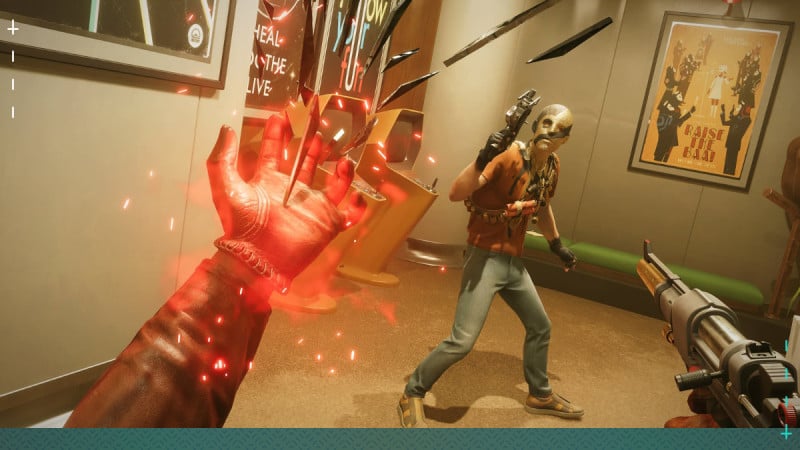
Deathloop
There’s a moment in Deathloop when it all clicks. Not a specific moment. It’s likely at different points for every person, but eventually, players will figure out the game’s various puzzles and mechanics. Deathloop will finally click.
That specific moment alone is almost enough to warrant consideration for game of the year.
Deathloop’s premise is relatively simple: You’re Colt, trapped on the island Blackreef, which itself is trapped in a timeloop. To get out of this hell, you must kill eight targets, breaking the loop. You have to do this within 24 hours. If you fail, you start over.
It’s simple in explanation, but in execution, meticulous and complicated. In the first few hours of Deathloop, you fumble around with its weapons, powers, and intricate levels, trying to stay alive long enough to reach one target; the idea of killing eight feels like a pipedream wrapped in wishful thinking.
Over time, that objective becomes manageable. And then eventually, it clicks; all the puzzle pieces slide into place. The game no longer stands in your way. Deathloop becomes your playground of destruction and bloodshed.
Deathloop excels in that mechanical payoff. Flying through levels that initially took hours, commanding its action, and finally pulling off the final heist is satisfying in ways few other games are.
After finishing Deathloop, it is hard to resist starting a second playthrough. We wanted to fly through the early levels that gave us so many headaches, continuing to bend its world around our fingers. If you’re patient enough to accept Deathloop’s rules and terms, once the game gives you the keys to the castle, there’s not much else like the ensuing mayhem. | Our Review
1
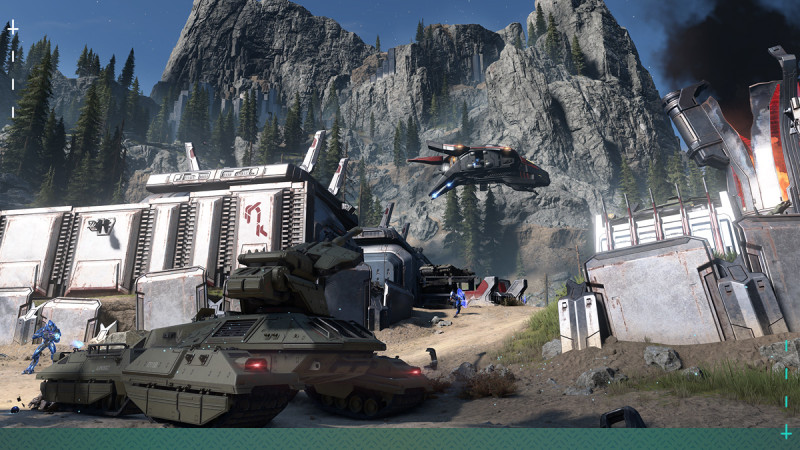
Halo Infinite
For over a decade, 343 Industries has been the shepherd of the Halo universe, taking the reins from original developer, Bungie, and continuing to chart a new course for the series. Halo 4 and Halo 5: Guardians found success in their own rights, but longtime fans noted that gameplay and storytelling veered from previous form. In the final weeks of this year, 343 managed a remarkable feat with its release of Halo Infinite – zeroing in on a framework for both campaign and multiplayer that felt unmistakably “Halo” while simultaneously exploring fresh ideas that help launch the series into the future.
That meeting point between old and new is apparent from the first hours of Infinite’s campaign. Individual story beats seem at times to directly echo moments from the original Halo: Combat Evolved. Enemy combatants feel fierce, familiar, and challenging. The ringworld setting itself recalls the Pacific northwest locale that initially inspired the series. And many multiplayer modes aptly reflect the tense exchanges the franchise first employed.
Look closer, and Infinite reveals that it is far more than a fresh coat of paint on an old formula. New equipment, especially the grappleshot, changes the way players confront a battle. Major missions, open-world exploration, and upgrades lend increased replay value and a sense of discovery. Specific encounters, particularly at large bases, support player freedom and creative problem-solving. And in multiplayer, expanded Big Team Battle rosters, a more significant role for equipment, and a free-to-play model that invites all players to the table, regardless of platform, are just some of the notable shifts.
No game is perfect, and Halo Infinite’s launch release has space for improvement. Multiplayer progression, the number of maps, and limited customization all need addressing. And in the campaign, the absence of cooperative play is a gut punch. But a game doesn’t need to be perfect to stand out. Infinite offers immaculate shooting, one of the best original musical scores in years, and a heartfelt storyline rooted in themes of hope and resilience – much-needed topics for many players in 2021. It’s a return to form for a much-beloved franchise and a standout marquee release for Microsoft’s new generation of releases. Halo Infinite is a game we can’t put down and one we’re likely to continue pouring hours into as we head into 2022. | Our Review
Source: Game Informer Game Informer's Top 10 Games Of 2021


